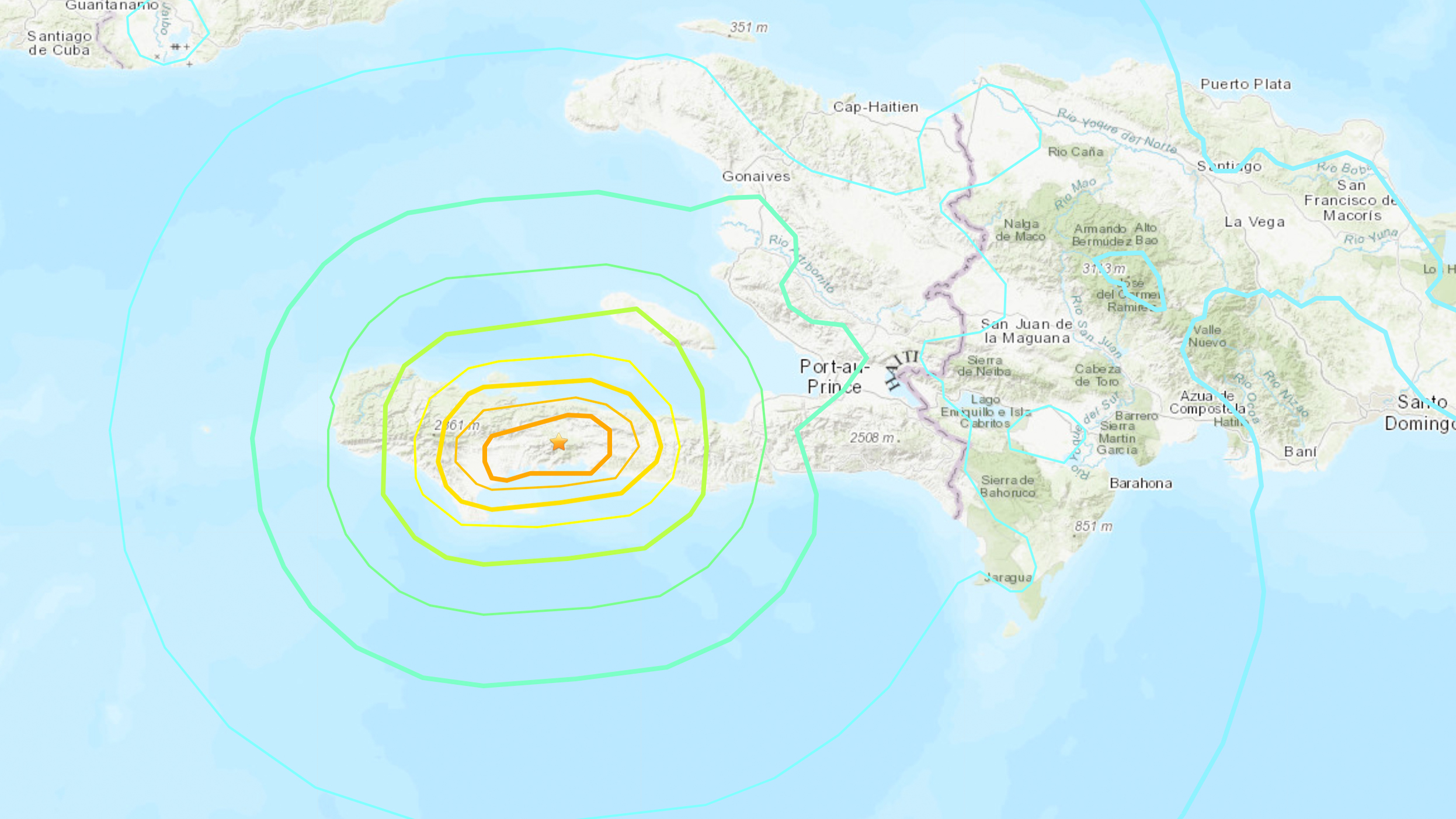
Updated at 12:30 p.m. ET, on Monday (Aug. 16).
At least 1,297 people have died and another 5,700 are reported injured after a magnitude-7.2 earthquake struck Haiti on Saturday (Aug. 14), rocking the capital city and toppling buildings, according to the U.S. Geological Survey and news reports.
With the potential to hamper recovery efforts, the tropical depression Grace was also nearing the southern coast of Hispaniola, the island where Haiti is located, bringing high winds and the possibility of heavy rainfall to the area, CNN reported.
The massive temblor's epicenter was about 5 miles (8 kilometers) from a city called Petit Trou de Nippes, and about 77 miles (125 km) west of the capital, Port-au-Prince. Shaking could be felt as far as Jamaica, roughly 2,000 miles (3,200 km) away, The New York Times reported.
Haiti's Prime Minister said on Sunday (Aug. 15) that he was sending aid to the hardest-hit areas, where hospitals are being overwhelmed with the onslaught of patients.
One hospital in Jeremie, in the southwestern part of Haiti, had to set up tents in its courtyard to accommodate the injured, CNN reported. "There are a lot of people coming in — a lot of people," an administrator at the Hôpital Saint-Antoine in told CNN. "We don't have enough supplies."
The southwestern town of Les Cayes was almost completely demolished by the earthquake, according to Haiti's Prime Minister Ariel Henry. "The most important thing is to recover as many survivors as possible under the rubble," Henry said, as reported by The Associated Press. "We have learned that the local hospitals, in particular that of Les Cayes, are overwhelmed with wounded, fractured people."
Sign up for the Live Science daily newsletter now
Get the world’s most fascinating discoveries delivered straight to your inbox.
aftermath of the 7.2 magnitude earthquake in Haiti 🇭🇹 🙏🏽 pic.twitter.com/080yX6P9FJAugust 14, 2021
In 2010, a magnitude-7.0 quake struck the capital, killing approximately 200,000 people and destroying much of Port-au-Prince. It has taken years for the country to rebuild after that quake.
Haiti sits near the boundary between two tectonic plates: the North American and Caribbean plates. The North American plate is creeping westward at the boundary at about 0.8 inches (20 millimeters) per year, according to USGS. Much of this slip is accommodated by a network of faults that snakes through the island of Hispaniola, where Haiti is located. The current quake, as well as the devastating 2010 quake, both struck along one of the southern faults in this network, known as the Enriquillo-Plantain Garden Fault. The most recent quake, however, was likely caused by lateral-slip, where one side of the fault slides past the other side, whereas the 2010 temblor was caused by thrust on a different portion of the fault, where one portion of the fault moves vertically relative to the other, according to USGS.
Originally published on Live Science.

Tia is the managing editor and was previously a senior writer for Live Science. Her work has appeared in Scientific American, Wired.com and other outlets. She holds a master's degree in bioengineering from the University of Washington, a graduate certificate in science writing from UC Santa Cruz and a bachelor's degree in mechanical engineering from the University of Texas at Austin. Tia was part of a team at the Milwaukee Journal Sentinel that published the Empty Cradles series on preterm births, which won multiple awards, including the 2012 Casey Medal for Meritorious Journalism.









